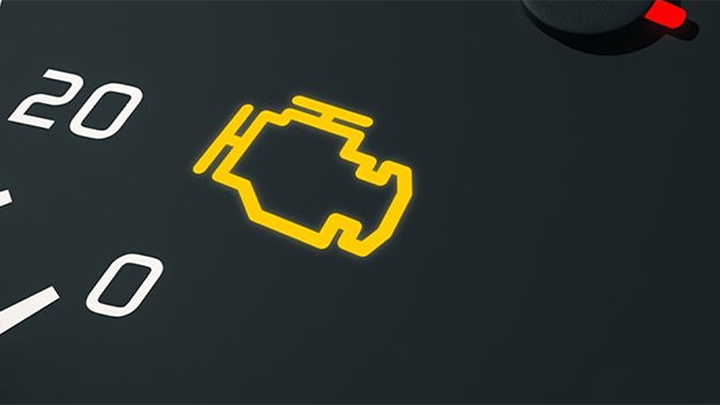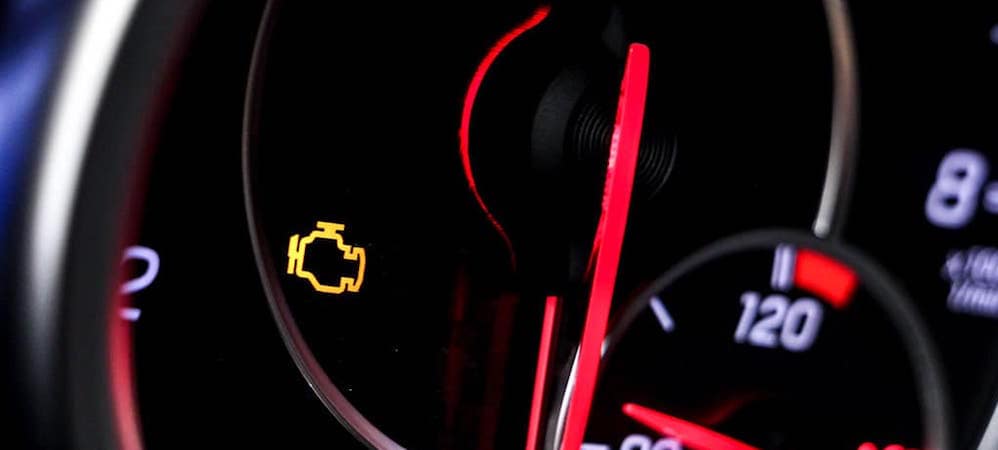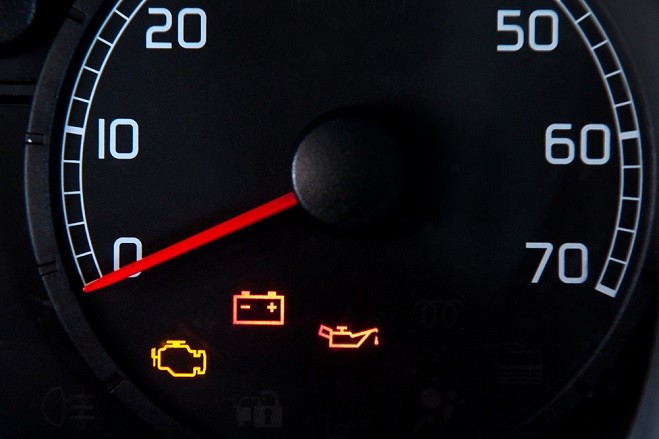The check engine or emissions light on many cars will occasionally illuminate. The emissions light on your car is a signal that something is wrong with the emissions control system. This light indicates that there is a problem with the emissions system when it illuminates. Is it safe to drive with emissions light on?
Short trips may allow you to drive with the light on, but you shouldn’t since it could harm other parts. Driving while your car has unresolved emissions issues also results in increased air pollution emissions from your car. Emission problems usually get worse over time if left untreated. It occasionally has an impact on both the performance and gas mileage of your car. Therefore, you should get your car diagnosed by a repair shop as soon as possible for the long-term health of your vehicle and to prevent potential fines.

Contents
Is It Safe To Drive With Emissions Light On?
It is not safe to drive with the emissions light on all the time. Often called the “Check Engine” light, this is the emissions light. When the onboard diagnostics system of your car finds a possible problem with the engine or emissions system, it turns on. Although the light by itself may not always signal an impending safety threat, it does suggest an issue that needs to be addressed.
Driving with the emissions light on could lead to more emissions, less fuel economy, and possibly even damage to engine parts. You should get your car checked out by a professional mechanic as soon as possible to remedy the problem. Ignoring the warning may result in more serious issues and expensive fixes.
If the initial issue is not resolved, it may worsen over time. Additionally, if the check engine light is on during an inspection in some areas, it could result in fines. It’s best to have your car looked out as soon as the emissions light appears in order to determine and fix the underlying problem.
What Can Cause The Emissions Light To Come On?
The emissions light indicates a problem with a vehicle’s emissions control system. Common causes include oxygen sensor or catalytic converter problems, which monitor and treat exhaust emissions. It can also be caused by evaporative emissions component problems such as a defective gas cap or leaky vapor lines. The exhaust gas recirculation valve and oxygen sensor heater are two emissions components that might fail, causing the check engine light to illuminate. Minor issues, such as vacuum leakage from damaged hoses, can cause the onboard diagnostics to report an emissions problem.

Loose Gas Cap
The emissions light may come on if the gas cap is missing, damaged, or loose. Failing to keep the fuel system under pressure with the gas cap on can result in higher emissions.
Faulty Oxygen Sensor
Oxygen sensors measure the amount of oxygen in exhaust gases. A faulty sensor can reduce fuel efficiency and pollutants.
Catalytic Converter Issues
Overheating or failure of the catalytic converter might cause the emissions light to illuminate. This element is critical for lowering hazardous emissions.
Mass Airflow Sensor Malfunction
The mass airflow sensor regulates fuel injection by measuring the amount of air entering the engine. Engine malfunctions can have an impact on engine performance and emissions.
Issues with the Exhaust Gas Recirculation (EGR) System
To reduce nitrogen oxide emissions, the EGR system recirculates a portion of exhaust gases. Problems with this mechanism can cause the emissions light to illuminate.
Faulty Ignition System Components
Problems with spark plugs, ignition coils, or spark plug wires can impair combustion and raise emissions.
Vacuum Leak
Vacuum system leaks can disturb the air-fuel mixture, decreasing engine performance and activating the emissions light.
Malfunctioning Evaporative Emission Control System (EVAP)
Problems with the EVAP system, which is in charge of catching and recycling fuel vapors, might cause increased emissions and activate the light.
What To Do If Your Emission Light Comes On?

If your emission light comes on, follow these steps:
Don’t Panic
Continue to be composed. Although it may indicate a possible problem with your car, the exhaust light is a warning indicator and does not always indicate an imminent breakdown.
Check the Gas Cap
Make sure you tighten the gas cap all the way. The emission light frequently illuminates due to a damaged or loose gas cap. The problem could be fixed by tightening or changing the gas cap.
Read the Owner’s Manual
Refer to the owner’s manual for your car. It can provide details on the emission light’s meaning and any particular actions you should take.
Reduce Driving Intensity
Steer clear of fast speeds, hard acceleration, and aggressive driving. This can lessen the possibility of harm in the event that the engine or emissions system malfunction.
Get the Vehicle Checked
Make an appointment for a trained mechanic to identify and resolve the problem. Mechanics can obtain error codes from the computer of your car by using diagnostic instruments.
Use a Code Reader
To obtain error codes, insert an OBD-II code reader into the car’s diagnostic port if you have one. Although these codes can provide further information about the issue, a professional consultation is always advised for a thorough diagnosis.
Avoid Ignoring the Light
Never disregard the emission light on your car, even if it appears to be operating normally. Ignoring the alert could result in higher emissions, less fuel efficiency, and possibly even damage to engine parts.
Keep in mind that the emission light serves as a useful early warning system. Promptly addressing the problem can ultimately save more complex and expensive repairs. Maintaining your car properly and paying attention to warning lights on time will help keep it safe and operating at its best.
How To Reset An Emission Warning Light?
Here are several methods for resetting an automobile’s emission warning light:
Address the Underlying Issue
Finding and fixing the issue that resulted in the emission warning light turning on is the first thing to do.
Use an OBD-II Scanner
Using an OBD-II (On-Board Diagnostics) scanner will allow you to reset the light if you’ve fixed the issue. Observe these general guidelines:
- Insert the OBD-II scanner into the diagnostic port, which is typically placed beneath the dashboard near the driver’s seat.
- Without starting the engine, turn the ignition key to the “On” position.
- Read and clear the diagnostic trouble codes (DTCs) linked with the emission problem using the scanner.
- Choose whether to clear or reset the codes.
Disconnect the Battery
Another way to reset the emission light is to disconnect the vehicle’s battery. Remember that doing so may also reset other settings in your vehicle, such as radio presets and the clock time. Take the following steps:
- Turn off the ignition and disconnect all accessories.
- Disconnect the vehicle’s battery’s negative (-) terminal.
- Allow at least 15 minutes.
- Connect the negative terminal again.
Drive Cycle
You may need to perform a drive cycle after resetting the emission light to allow the vehicle’s computer to relearn key parameters. This includes driving the car in a variety of settings, including highway and city driving.
Professional Assistance
If you are still uneasy after performing a reset, you should seek expert assistance from a certified repair.